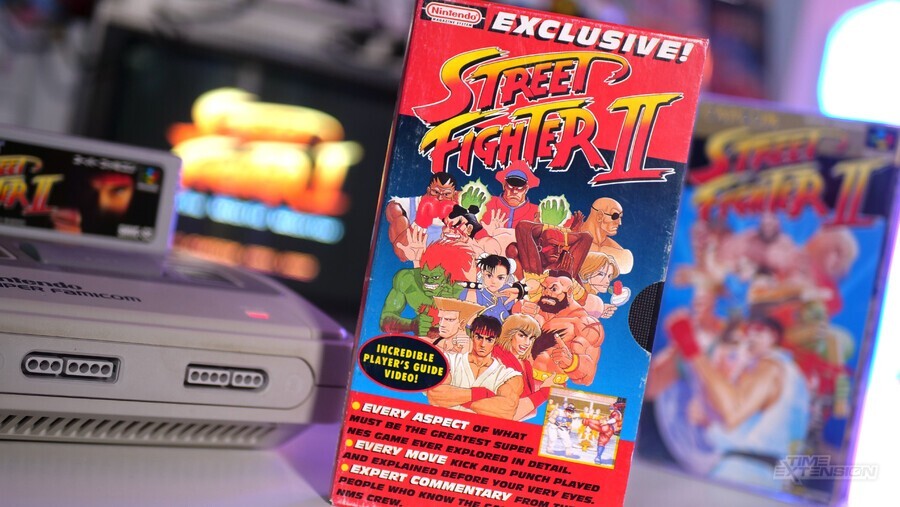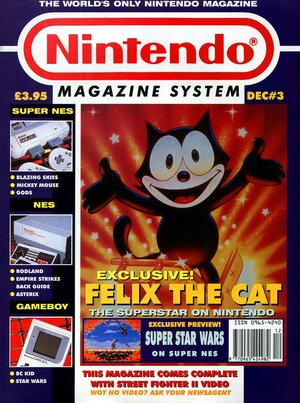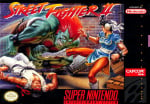
Picture the scene. It's the early 1990s, the internet hasn't taken over the world yet, and you've just wandered into your local newsagents to purchase a video game magazine. Assembled on the shelf in front of you is a plethora of competing options – multiple magazines covering the same consoles and games, but each one vying for your attention and coinage. Then, out of the corner of your eye, you spot something extraordinary: a magazine with a VHS tape on the front. Your decision made, you proceed to the counter, holding in your hands what is perhaps the first ever example of a 'let's play' video – a format which, in the present day, is all over YouTube – but, back in the '90s, was practically unheard of, at least in the United Kingdom (examples existed in Japan and North America).
I remember doing a comparative study of our competitors and realized that Mean Machines Sega / Nintendo Magazine System had over 50 rival magazines competing against them. It was insane, really
This is the exact scenario which played out in December 1992, and the publication in question was the third issue of Nintendo Magazine System. Established just two months earlier, NMS was published by EMAP, and was an off-shoot of the phenomenally successful Mean Machines magazine, which had arrived in 1990 and revolutionised British games journalism. By securing the official Nintendo license, EMAP had created a behemoth, a publication that combined the best journalistic talent of the era with the benefits of a close relationship with the platform holder, laying down the template that would turn subsequent efforts – such as Future's Official PlayStation Magazine – into commercial monsters. However, even by 1992, the market was in danger of becoming oversubscribed – hence the desire of editor Julian Rignall to try something a little different.
"It was basically an escalation of the 'magazine cover-mounted gift wars' of the period," he tells us. "In 1992, the video game magazine sector was massively over-saturated. Indeed, I remember doing a comparative study of our competitors and realized that Mean Machines Sega / Nintendo Magazine System had over 50 rival magazines competing against them. It was insane, really. So to stand out, we’d create cover-mounted gifts to persuade kids to part with their money."

The first issue of NMS launched with a free Game Boy-style keyring containing a digital clock, while issue four would feature a CD containing the arcade soundtrack to Street Fighter II. Capcom's game had exploded onto the scene in the previous year, and its conversion to the SNES made it the hottest title of the period by some margin. It was, as Rignall says, the logical choice to spearhead EMAP's covermount offensive – and the aforementioned VHS tape was the culmination of this effort. "That Street Fighter II VHS was basically the nuclear option: I don’t think we could have put anything bigger, better, and more original on the cover of the magazine."

The format was simple; Rignall sat down with the magazine's art editor (and fellow Street Fighter II expert) Gary Harrod, and the pair would play through all eight characters, imparting knowledge and advice as they went. Special moves were detailed, as were unique tactics for each fighter – and the duo even discussed strategies for dealing with the four boss characters. What made this footage stand out was the fact that Rignall and Harrod knew the game inside-out; indeed, Rignall had been one of the first people to report on the arcade version of Street Fighter II in the UK, via his tenure on EMAP's massive popular Computer & Video Game magazine. "I’d been playing the game solidly ever since I first saw it at the very beginning of the previous year," he explains. "First of all in my local Southend arcades, but later in the office when we acquired a Street Fighter II coin-op. Free play and stupid amounts of time invested playing the game – plus the fact that we were all exceptionally talented gamers and fed off one another’s tactics and strategies – made us extremely good at it."
The process of recording the footage was relatively straightforward, even though it was something neither Rignall nor Harrod had any experience with previously. "Basically, we looked up professional recording studios and found one relatively near to our offices," recalls Rignall. "Once we’d talked them through what we wanted to do, we took over all our gear – SNES, joysticks, etc – plugged it into their video capture system, made sure everything worked, and once all looked good, we started recording. Even though we’d never done a 'let’s play' video before – nor had anyone else, as far as I knew at the time – we knew what we were talking about, so we were able to ramble on and get everything done in one very long single take. The recording studio edited out the few mistakes and stumbles we made to tighten it all up."
Understandably, the idea of slapping a bulky VHS tape onto the front of a magazine with a circulation in the hundreds of thousands wasn't the easiest thing to get past some of the penny-pinchers at EMAP. "Graham Taylor, the publisher, loved it, but EMAP’s distribution folks initially baulked at the idea of putting a VHS on the front of the magazine," Rignall remembers. "For a start, it significantly increased the magazine's weight, it made copies far bulkier, and there were some concerns newsagents might push back on the fact that it took up more shelf space than usual. However, we raised the price of the magazine to cover manufacturing and distribution costs, and since the magazine completely sold out, newsagents were more than happy with the results as they made more money than usual."
The fact that we were putting Street Fighter II gameplay into the hands of readers decades before these kinds of videos became popular on YouTube is pretty incredible
Indeed, the sales performance of this particular issue of NMS made it clear that the experiment was a massive success. "I can’t remember specifically, but it sold over 200,000 copies," says Rignall. To give you an idea of the sheer scale of the market back in the pre-internet '90s, in 2023, there are UK video game magazines that struggle to sell even a tenth of that amount each month. "Those early issues of NMS were some of the biggest all-time European single-issue video game magazine sales," Rignall continues. In terms of a console / single format magazine, NMS was the biggest-selling. I think only early issues of GamesMaster beat it in terms of single-issue sales – which is understandable considering its TV credentials and the fact that it was a multiformat magazine."
It was, in Rignall's opinion, the absolute apex of the cover-mounted freebie – at least when it came to video game magazines. However, it's remarkable for another reason; it pre-dates the now-omnipresent 'let's play' format by decades. The aforementioned GamesMaster – which was a TV show as well as a magazine, and began its broadcast run at the start of 1992, 11 months before issue 3 of NMS – could arguably be credited with cooking up a variation on the format (ironically, Rignall was also involved in that, stepping in during challenges to offer commentary and tips), the cover-mounted VHS was the first to devote a significant amount of time to a single title. "The fact that we were putting Street Fighter II gameplay into the hands of readers decades before these kinds of videos became popular on YouTube is pretty incredible," admits Rignall.

"It blazed a trail, for sure. Nobody in the UK had done anything like that before – nor put it on the front of a magazine. The idea of being able to watch a video of 'pro' gamers play a game was unheard of, and to be honest, we took a risk producing it. Nobody really knew for sure whether people would be interested or not in watching a gameplay video. However, people used to watch me for hours when I was notching up ridiculous record scores in arcades – plus, we all had a hunch our readers would love it, so we just went with it, and it paid off handsomely."
What's equally remarkable is how much the video still gets mentioned today. A few years back, it was lovingly preserved online by games journalist and Hookshot contributor Chris Scullion and was recently mentioned in Oliver Harper's Street Fighter II documentary Here Comes A New Challenger. Did Rignall anticipate at the time of its creation that it would still be being spoken about over 30 years later?
"It’s very cool for sure, but not exactly surprising since so many people seem to have absolutely loved it. Whenever I post about it, I always get many responses from people telling me they watched it repeatedly and how important it was to them as kids since it gave them a chance to actually see the game being played – plus hear hints and tips from 'experts'. It made a big impression, so it’s nice that people remember it."




